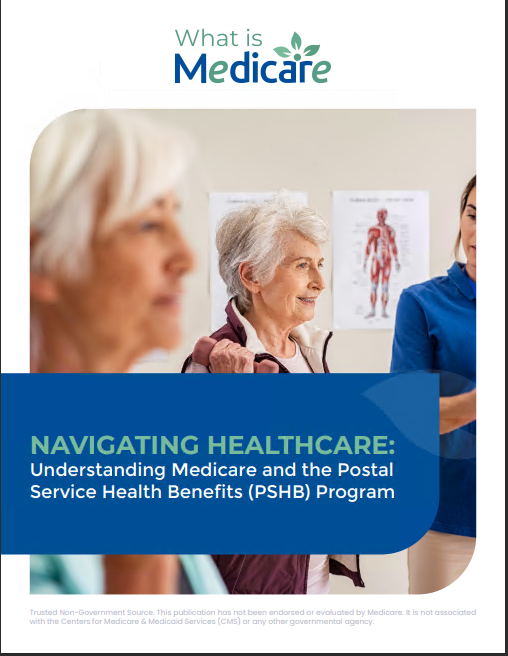Key Takeaways
-
Understanding Medicare prescription drug coverage helps you avoid costly mistakes and gaps in care.
-
Knowing enrollment periods, cost structures, and coverage options ensures you select the right plan for your needs.
Understanding Medicare Prescription Drug Coverage
If you’re approaching Medicare eligibility or considering switching plans, prescription drug coverage is one of the most important aspects to understand. Mistakes in enrollment or plan selection can lead to unnecessary expenses, coverage gaps, or even late penalties. Before you enroll, take the time to explore how Medicare covers prescription drugs and how you can make the best choice for your situation.
The Two Ways to Get Medicare Drug Coverage
Medicare offers prescription drug coverage through two primary options:
1. Medicare Part D (Standalone Prescription Drug Plans)
Medicare Part D plans are separate insurance plans designed to cover prescription medications. These plans are offered by private insurance companies and work alongside Original Medicare (Part A and Part B). Each plan has its own formulary, or list of covered drugs, and may categorize medications into different tiers with varying cost-sharing requirements.
2. Medicare Advantage (Part C) Plans with Drug Coverage
Many Medicare Advantage (Part C) plans include prescription drug coverage as part of their benefits. These plans bundle hospital, medical, and drug coverage into one plan. While they may offer additional benefits beyond Original Medicare, they typically require members to use network providers and adhere to plan rules for drug coverage.
Enrollment Periods: When to Sign Up for Medicare Drug Coverage
Timing is everything when it comes to Medicare prescription drug coverage. Missing deadlines can result in late enrollment penalties and periods without drug coverage. Here are the key enrollment windows:
Initial Enrollment Period (IEP)
-
Starts three months before your 65th birthday month and extends three months after.
-
If you sign up during this period, your coverage typically starts on the first day of the month after you enroll.
Annual Enrollment Period (AEP)
-
Runs from October 15 to December 7 each year.
-
You can join, switch, or drop a Medicare drug plan during this time, with coverage changes taking effect on January 1 of the following year.
Medicare Advantage Open Enrollment Period
-
Runs from January 1 to March 31.
-
If you’re in a Medicare Advantage plan, you can switch to a different Medicare Advantage plan or go back to Original Medicare and enroll in a Part D plan.
Special Enrollment Periods (SEPs)
-
Available in specific situations, such as losing employer drug coverage, moving to a new service area, or qualifying for Extra Help.
Understanding Costs: Premiums, Deductibles, and Copayments
The cost of Medicare prescription drug coverage can vary depending on the plan you choose. Here’s what you need to consider:
Monthly Premiums
Each Part D plan has a monthly premium that you must pay, even if you don’t take medications regularly. The amount varies based on the plan you select.
Annual Deductible
Most plans have a deductible—the amount you must pay out of pocket before the plan starts covering your prescriptions. For 2025, the maximum deductible for a Part D plan is $590.
Copayments and Coinsurance
Once you meet your deductible, you’ll pay either a fixed copayment (e.g., $10 per prescription) or a percentage of the drug’s cost (coinsurance). Costs can differ based on the drug tier.
The Medicare Part D Coverage Stages
Medicare prescription drug coverage is structured into stages, impacting how much you pay throughout the year.
1. Deductible Phase
You pay 100% of drug costs until you reach your plan’s deductible.
2. Initial Coverage Phase
Your plan covers a portion of drug costs, and you pay the remaining amount through copayments or coinsurance.
3. Catastrophic Coverage Phase
In 2025, once your out-of-pocket costs hit $2,000, you enter catastrophic coverage, where your plan covers 100% of covered drug costs for the rest of the year.
Choosing the Right Medicare Drug Plan
Selecting a plan requires careful evaluation of your prescription needs and budget. Consider the following:
-
Formulary: Ensure your medications are covered and compare costs between plans.
-
Pharmacy Network: Some plans offer preferred pharmacies with lower costs.
-
Total Annual Costs: Don’t just look at the premium; factor in deductibles and copays.
-
Star Ratings: Medicare rates plans based on customer satisfaction and quality.
Avoiding Common Medicare Drug Coverage Mistakes
Many enrollees make costly mistakes when signing up for Medicare prescription drug coverage. Avoid these pitfalls:
1. Missing the Enrollment Deadline
Late enrollment can result in permanent penalties added to your monthly premium.
2. Assuming All Drugs Are Covered
Each plan has a unique formulary. Check that your specific medications are included.
3. Ignoring Annual Plan Changes
Medicare drug plans change formularies, costs, and pharmacy networks yearly. Review your options during Open Enrollment (October 15 – December 7).
4. Overlooking Extra Help Programs
If you have limited income, you may qualify for Extra Help, reducing your prescription costs significantly.
The Bottom Line
Choosing the right Medicare prescription drug coverage requires careful planning and awareness of enrollment periods, costs, and coverage details. Avoid mistakes by reviewing your options annually and ensuring your plan meets your medication needs. If you’re unsure about your choices, a licensed agent listed on this website can help you compare plans and make an informed decision.










